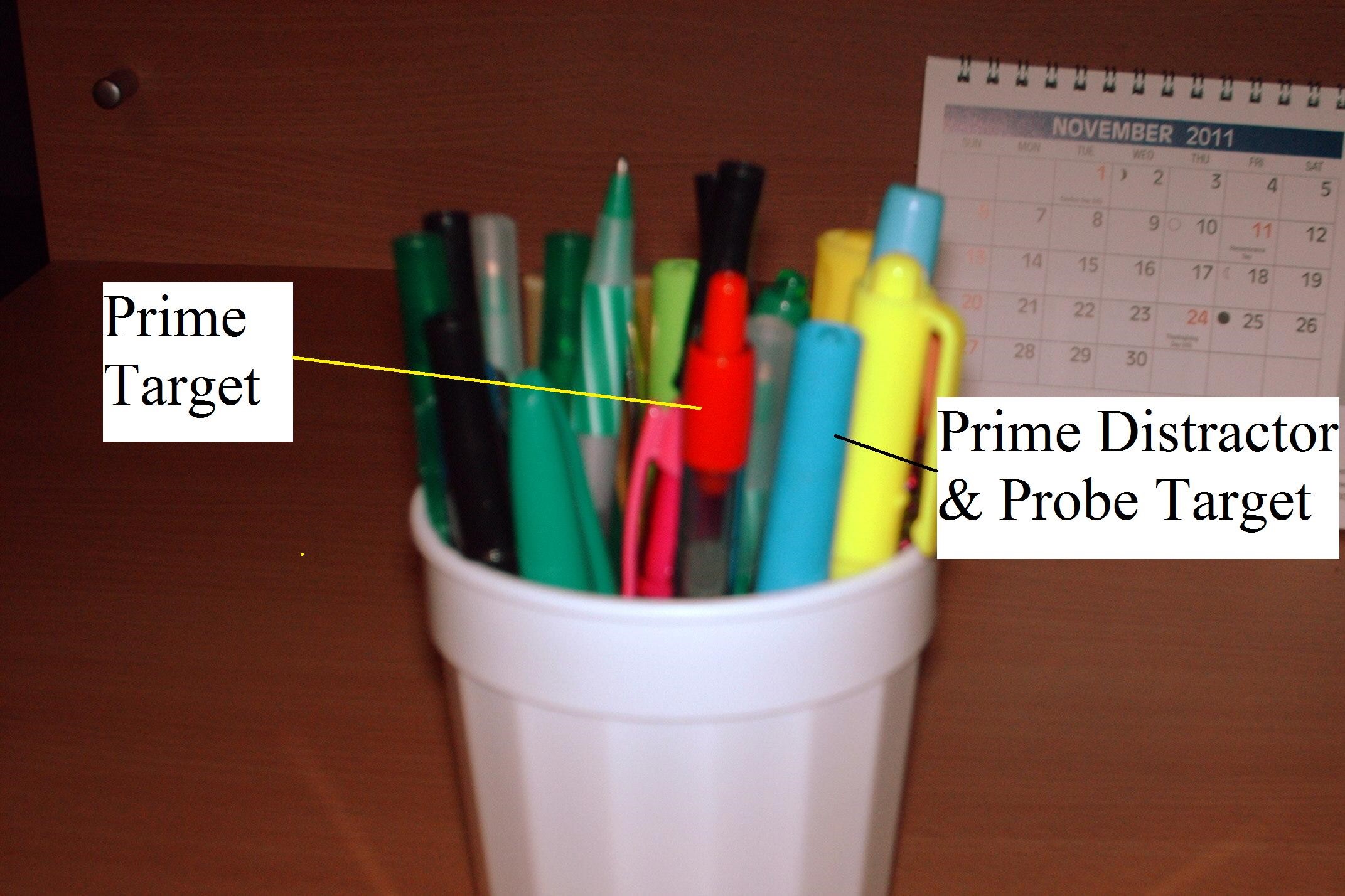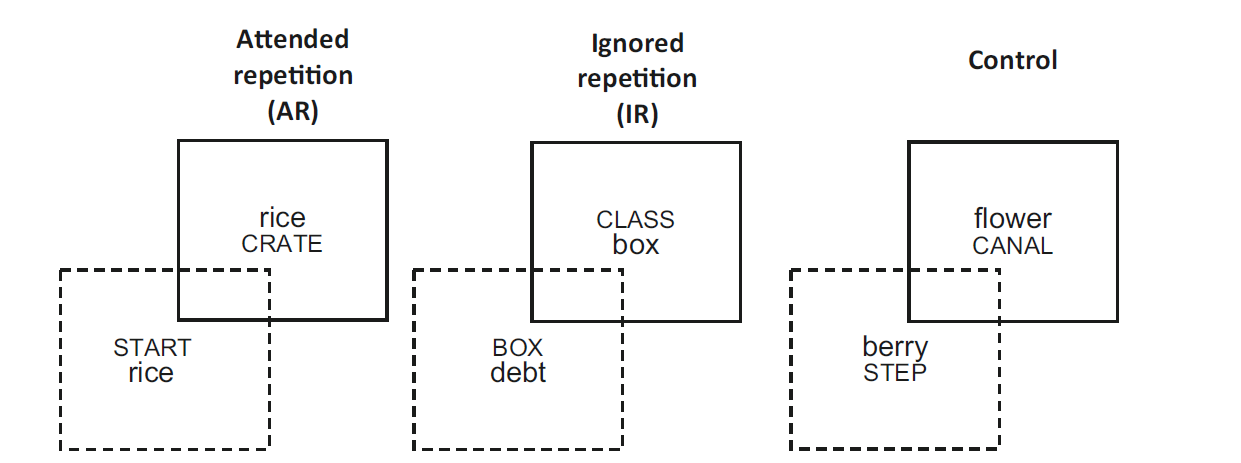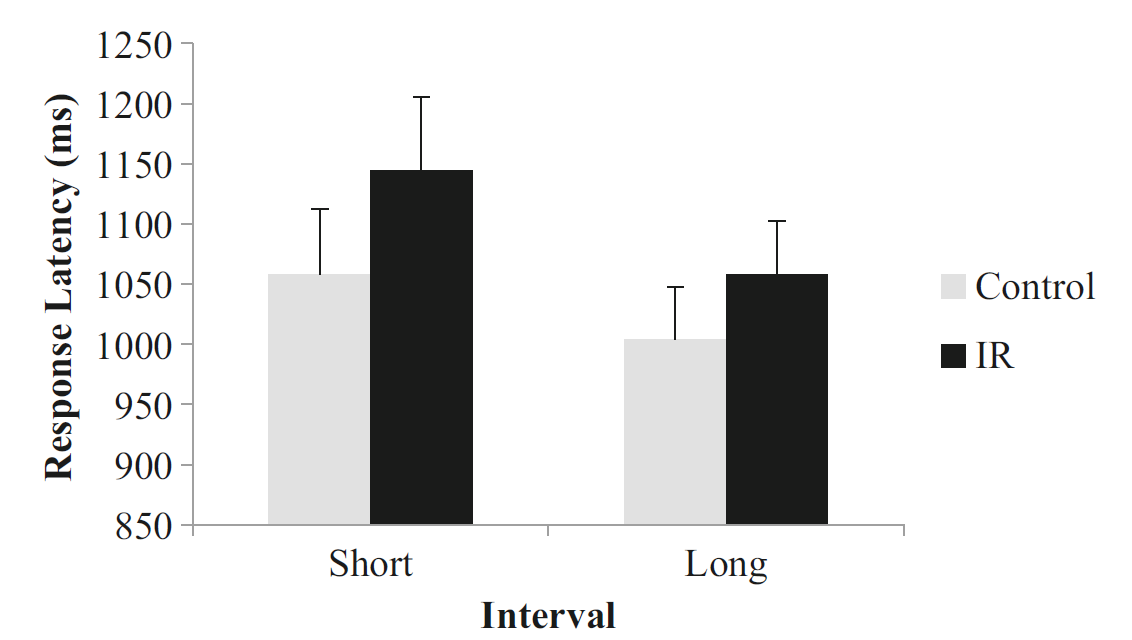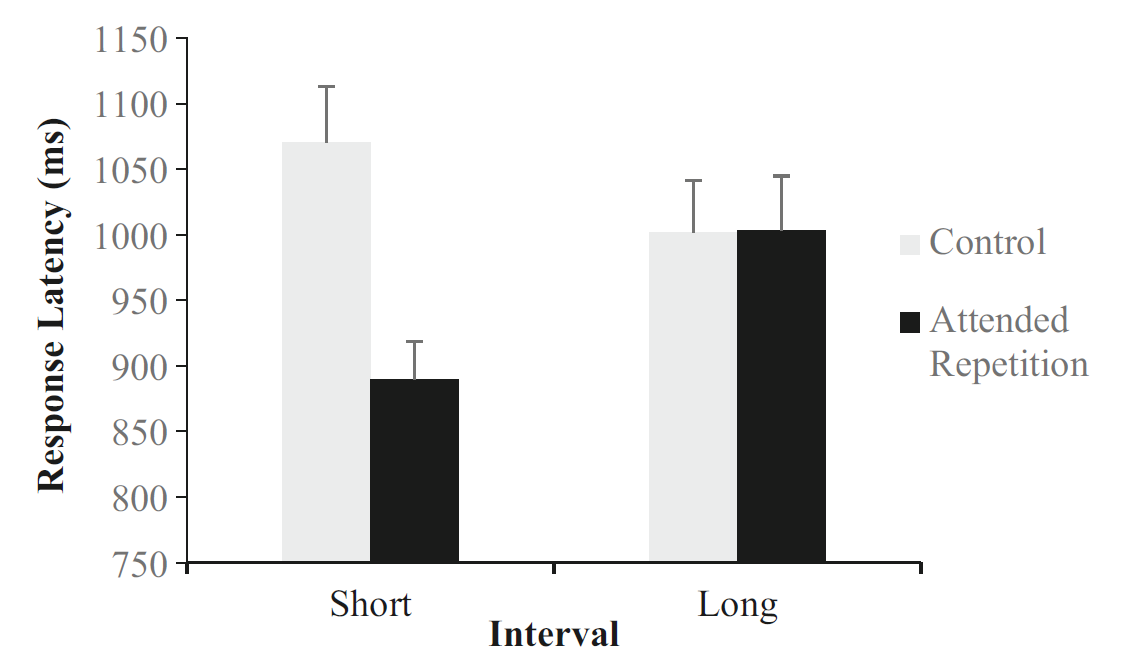We are bombarded by stimuli almost every instant of every day. Even logging off Twitter provides only temporary relief before more information arrives that we have to deal with. Being able to inhibit unwanted responses to stimuli is therefore a critically important cognitive ability, and researchers have shown considerable interest in such inhibitory and control processes.
One phenomenon that has attracted research attention is the observation of “negative priming”, which occurs when a stimulus that had to be ignored on an immediately preceding trial all of a sudden becomes relevant. Imagine that are looking for a red pen among many others on your desk (see photo below from Wikipedia).

You grab the red pen, color in parts of your Pokemon cartoon, and all of a sudden the cartoon calls for blue—you would find it harder to find the blue pen, having just ignored it in favour of red, than in a control condition in which the blue pen never competed for your attention.
In research on negative priming, the blue pen would be called an “ignored repetition” stimulus (IR). For IR stimuli, responses are slowed and more error-prone in comparison to a control condition in which there are no repetitions across trials. The fact that an ignored stimulus affects responding on subsequent trials demonstrates that some processing had to occur when the stimulus was first shown (and ignored), although research to date has not converged on a single explanation for negative priming.
Positive priming, by contrast, refers to a facilitation of performance when a stimulus is repeated and the same task is required on both occasions. For example, if a word is presented a second time for a lexical decision (“is this item a word? YES|NO”), performance is faster than at the first presentation. Those effects can be surprisingly long-lasting: positive priming has been observed in lexical decision after a 2-day delay.
It is far less clear whether negative priming could also persist across longer delays than the typical range of a few seconds or less. A recent article in the Psychonomic Society’s journal Attention, Perception, & Psychophysics provided an explicit comparison of negative and positive priming, with a particular focus on the effects of delay (or “lag”) between presentations.
Researchers Kristin McLennan, Ewald Neumann, and Paul Russell used a task in which participants had to name (i.e., say aloud) the priming word, followed by a lexical decision on the probe stimulus (which could be a word or a pseudoword string). The figure below shows the procedure for three priming conditions:

The dashed boxes represent the priming component, where participants had to name the word printed in lower case and ignore the distractor in upper case. The immediately following lexical-decision components (solid boxes) also used case to signal relevance, and participants had to make a lexical decision on the lower-case letter strings (which were pseudowords on half the trials).
The IR condition in the middle illustrates how negative priming is typically observed: the distractor “BOX” on the priming trial is to be ignored, but an instant later it becomes a target (“box”) for the lexical-decision component. In the attended repetition (AR) condition, by contrast, the target is the same for both components (“rice”), and hence one would expect to detect positive priming in the AR condition.
McLennan and colleagues focused on negative priming in one experiment (conditions IR and control) and on positive priming in another (conditions AR and control). In both experiments, the crucial independent variable was the delay (or lag) between the two repetitions of the critical stimulus. Repetition was either immediate (as in the figure above), or occurred after 144 intervening trials.
The results for the negative-priming experiment are shown in the figure below, which plots lexical decision times for the various conditions:

The presence of negative priming is striking: responding was considerably slower in the IR conditions than the control. Moreover, negative priming was not confined to the short delays. Remarkably, it also occurred after 144 intervening trials.
This long-lasting effect did not appear to rely on explicit memory for the priming stimuli. When participants were asked to recall the distractor from the priming component (i.e., recall BOX on a surprise memory test immediately after a priming stimulus), only 1 person out of more than 40 were able to do so. Somehow, negative priming arose from information that people could not identify in their memory.
The priming pattern was strikingly different for the other experiment, which targeted positive priming. Those results are shown in the next figure:

First, it is clear that there was massive positive priming at the short delays, with the AR condition giving rise to far faster lexical decisions. However, this effect was entirely absent at the long delays.
Similar to the first experiment, only 1 participant was able to recall the priming distractor word on a catch trial, again suggesting that people had little explicit memory for the distractor (recall that in this experiment it was the attended item, not the distractor, that served as a prime).
These data present a theoretical puzzle. One putative explanation of negative priming suggests that the effect is driven by retrieval from memory. On this account, encountering a repeated item retrieves its previous copy from memory together with an associated “do not respond” tag (because the item was to be ignored at its first presentation). This retrieved information is in conflict with the demands that prevail at the second occurrence, where the same item now functions as a target and has to be responded to. This account is challenged by the fact that it would predict a facilitation in the AR condition: retrieval of the initial presentation in that condition should entail access to a “respond” tag, and this should facilitate responding to the item. However, unlike for the IR condition, no such effect was observed at long lags.
McLennan and colleagues suggest that the differences between the two manifestations of priming arose from the way in which the prime was processed: After all, on AR trials the prime had to be named aloud, thus ensuring that it was processed consciously. On IR trials, by contrast, participants tried to ignore the prime, thereby limiting its processing. In consequence, participants would have noticed the immediate repetition of the prime in the short-lag AR trials, and so the absence of that immediate repetition in the long-lag AR trials may have led to successful removal of explicit memory for the prime on the assumption that it was no longer needed. No such explicit control processes could be involved in IR trials where people demonstrably were unable to recall the distractor prime.
Psychonomics article highlighted in this post:
McLennan, K. S., Neumann, E., & Russell, P. N. (2019). Positive and negative priming differences between short-term and long-term identity coding of word-specific attentional priorities. Attention, Perception, & Psychophysics, 81, 1426–1441. DOI: 10.3758/s13414-018-01661-9.
